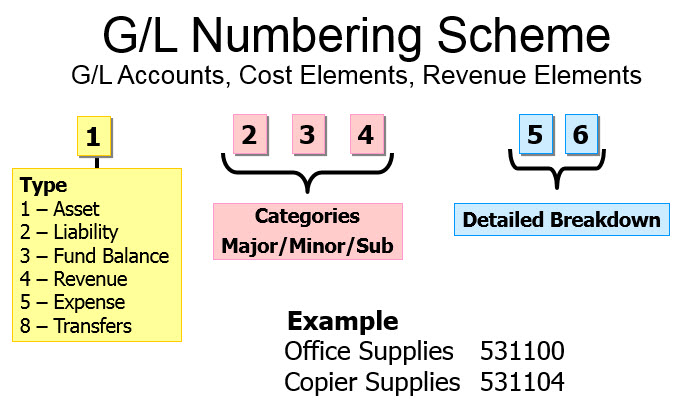GL (General Ledger) is an essential component of the accounting system used in banking and other industries. It serves as the central repository for recording and storing financial transactions and is used to prepare financial statements.
The GL ledger operation involves several steps, which can be described as follows:
- Chart of Accounts: The GL ledger starts with the creation of a chart of accounts. This is a structured list that defines various accounts used to classify financial transactions. Each account is assigned a unique code or number for easy identification.
- Journal Entries: When a financial transaction occurs, such as a deposit, withdrawal, or loan disbursement, it is recorded as a journal entry. A journal entry includes details such as the date, accounts involved, transaction amount, and a brief description of the transaction. For example, a deposit of $1,000 into a savings account would result in a journal entry debiting the cash account and crediting the savings account.
- Debits and Credits: The GL ledger uses a double-entry bookkeeping system, which means that every transaction affects at least two accounts. Each account involved in a transaction is either debited or credited based on its nature. Debits and credits must always balance, ensuring that the total debits equal the total credits in the ledger.
- Posting to the Ledger: After recording the journal entry, the amounts are posted to their respective accounts in the GL ledger. This involves updating the account balances by adding or subtracting the transaction amounts based on whether they are debits or credits. The ledger maintains a running balance for each account.
- Trial Balance: Periodically, a trial balance is prepared to ensure the accuracy of the GL ledger. It lists all the account balances, both debit and credit, to verify that the total debit balance equals the total credit balance. Any discrepancies in the trial balance indicate errors that need to be identified and corrected.
- Financial Statements: The GL ledger is used to generate financial statements such as the balance sheet, income statement, and cash flow statement. These statements provide a snapshot of the organization’s financial performance, position, and cash inflows and outflows.
Here is a simplified example of how the GL ledger operation works:
Date | Account | Debit ($) | Credit ($)
01/01/22 | Cash | 1,000 |
01/01/22 | Savings | | 1,000
In this example, a deposit of $1,000 is made into a savings account. The cash account is debited with $1,000, representing an increase in cash, while the savings account is credited with $1,000, indicating an increase in the savings balance. The GL ledger would reflect these entries in their respective accounts, updating the account balances accordingly.
As for the business diagram, it would typically involve visual representations of the GL ledger structure, accounts, and the flow of transactions. However, as a text-based AI model, I’m unable to provide visual diagrams. You may consider consulting accounting textbooks, online resources, or working with accounting software to obtain visual representations of GL ledger operations.
